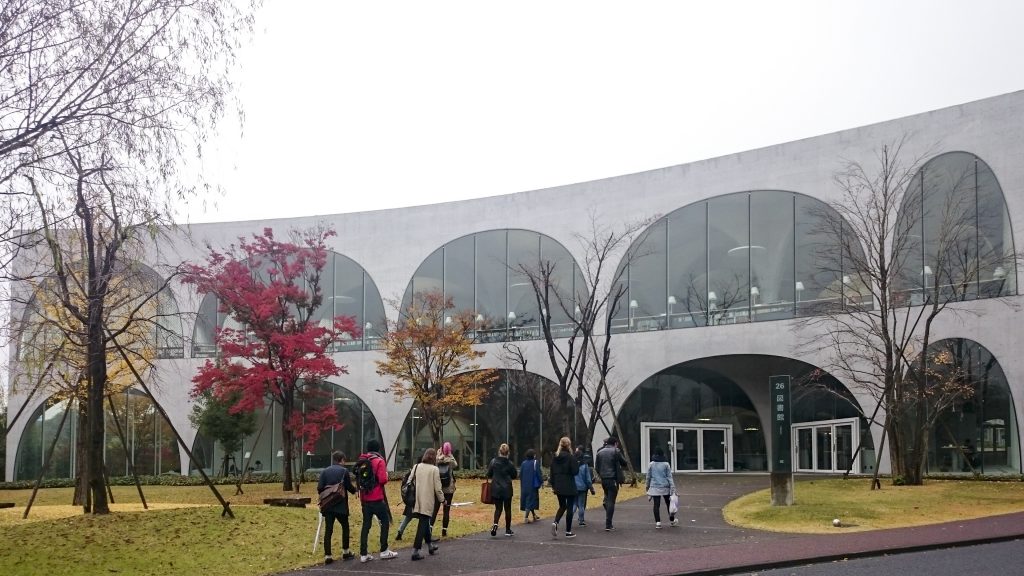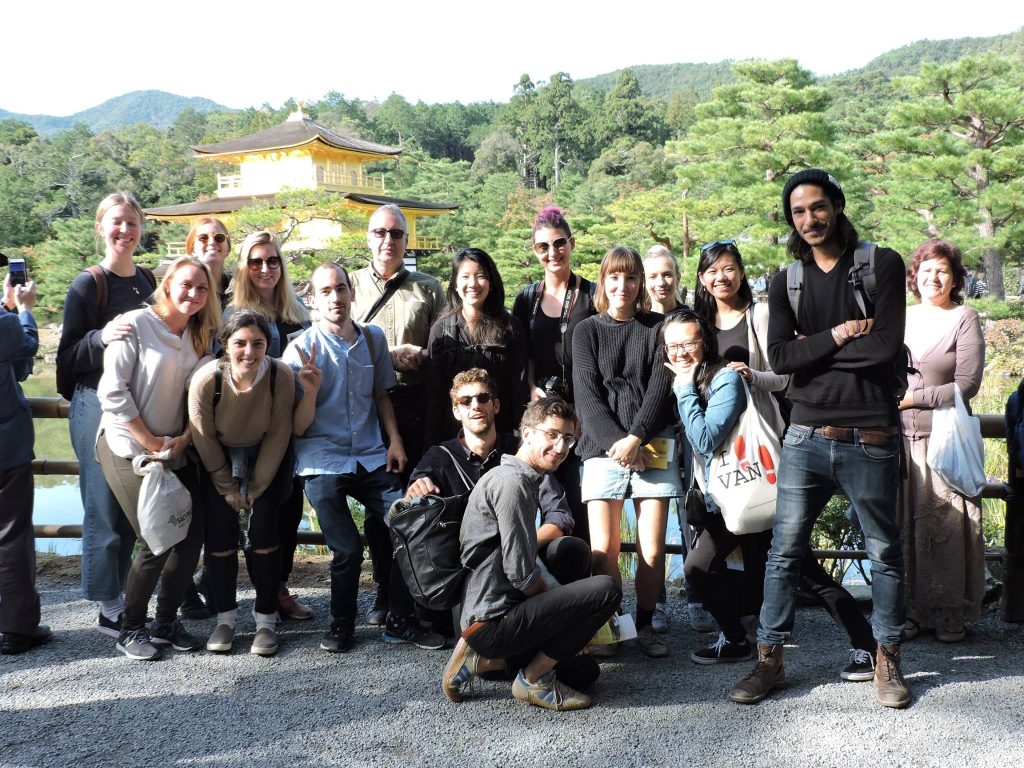Tokyo Research Studio
UBC SALA Tokyo Study Abroad, Fall 2016
Organizers + instructors: George Wagner (professor, UBC SALA), Lőrinc Vass (sessional lecturer, UBC SALA), Mariko Abe (aabbé design architecture)

(image source: pasmo.co.jp)
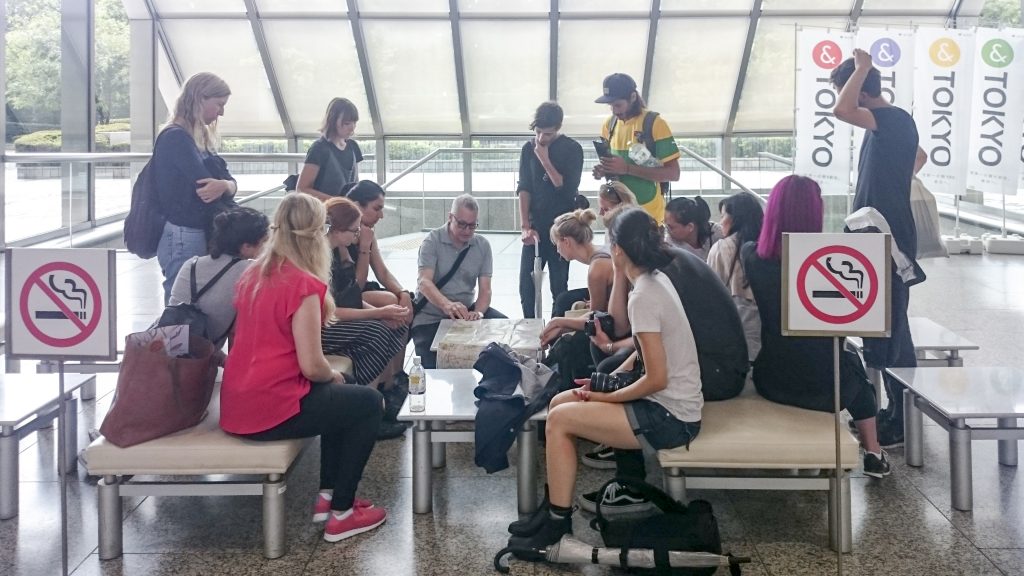
The Tokyo Research Studio is a semester-long, graduate-level study abroad program from the University of British Columbia’s School of Architecture and Landscape Architecture. Comprising of a design studio, drawing-based research seminar and field study course, it brought sixteeen UBC graduate architecture and landscape architecture students to the world’s largest metropolis. Utilizing Tokyo as an urban laboratory, the courses and other activities of the program offered multiple ways to begin to understand and engage the city as a complex system of interconnected and often modular parts, albeit an assemblage that is neither preconceived nor finite. The overall aim was to equip students with an understanding of the many ways urban-scale infrastructures and processes condition the realm of architecture, and, in turn, to explore possible entry points for architectural intervention through a close examination of individual and collective bodies, buildings and behaviours.
Learning about Japanese architecture and urbanism took place both in studio and outside the classroom. The three core courses in the program were complemented by lectures by invited guests, visits to architecture offices, a week-long trip to the Kansai region and the historic city of Kyoto, and optional urban forays.
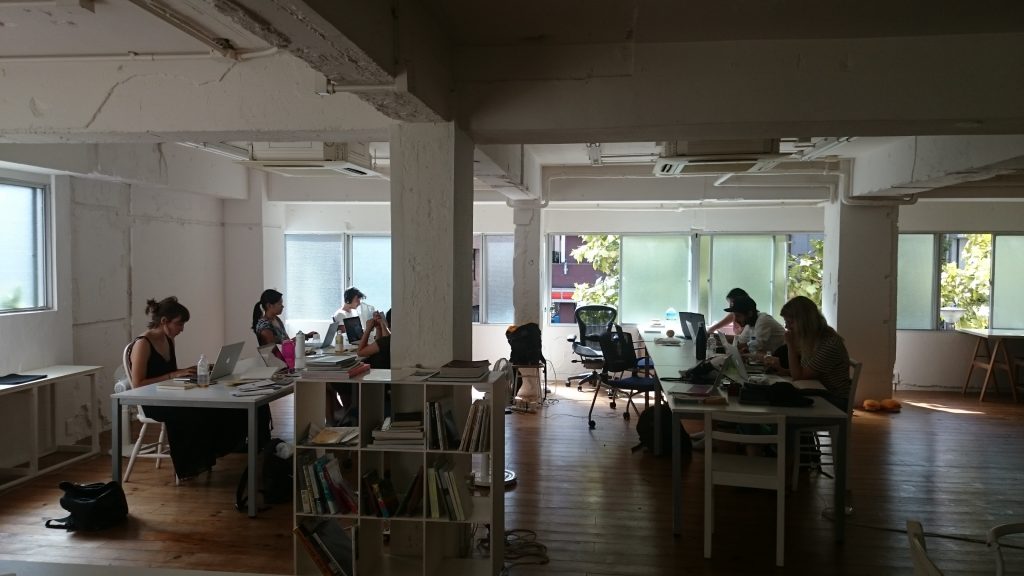
Design Studio: from railway stations complexes to fictions in the void
The design studio course began with an analysis of the spatial, temporal and social organization of Ikebukuro Station, the world’s second largest train station complex), in order to develop a sensitivity towards the relationships between buildings, conceived and constructed in relation to the scale of the human body (and in this case, also in relation to the railway transportation vessels that hold a large number of bodies), and the large-scale systems and phenomena of constitute urbanism. Students were thus asked to observe and graphically map not only the spatial characteristics but the experiential effects created by the complex systems of artifice that constitute the station as a lived space—including movement/time, circulation/access, program/economy, materiality/media and ecologies/controls.
The second part of the exercise asked to reconsider the (lack of) relationship between the station/department store complex and its urban context by speculatively perforating its interiority with a series of small social spaces.

Drawings by Olivia Bull, Amanda Jehring and Ryder Thalhaimer
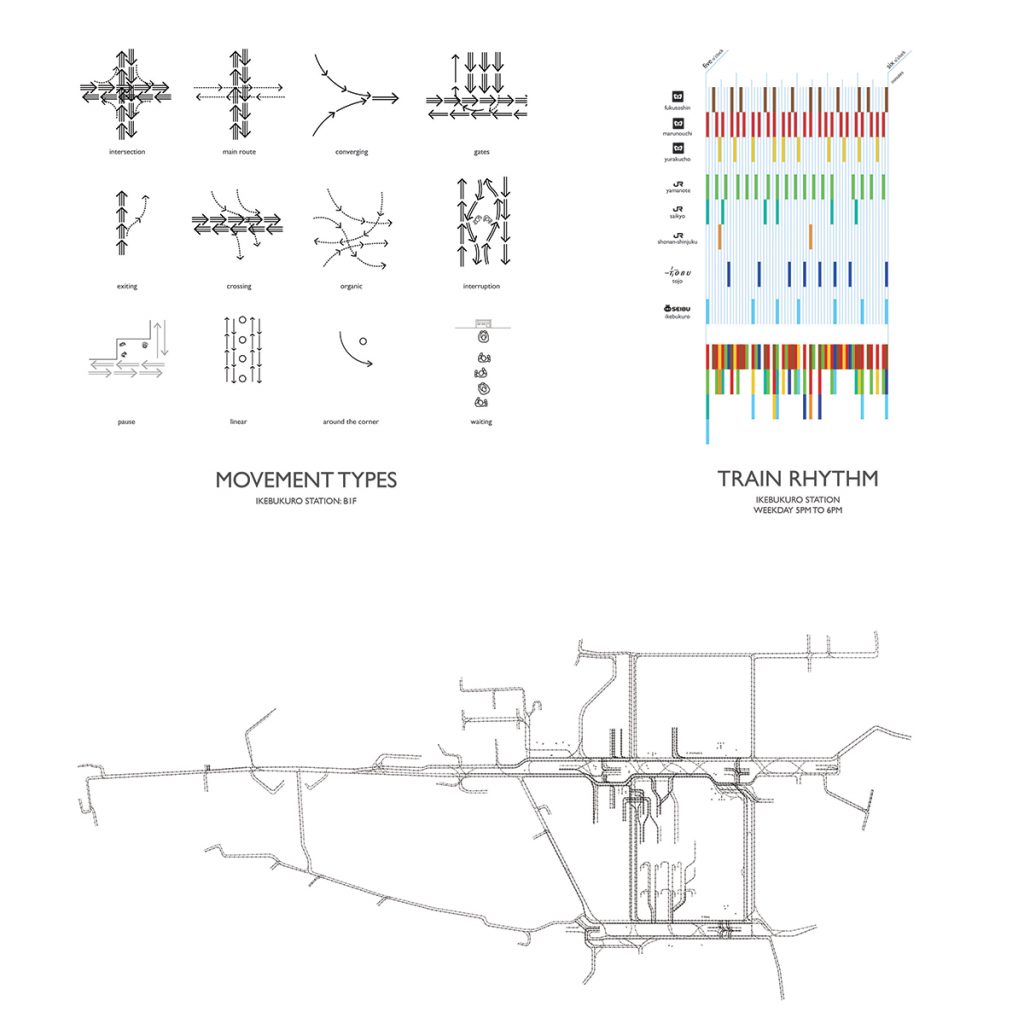
Drawings by Camille Bianchi, Jessyca Fan and Jasmine Lam

Project by Sébastien Roy
The second half of the semester centred on a former infrastructural right-of-way in Nishi-Shinjuku, a section of the Old Tamagawa Water Supply Route, which used to feed the Yodobashi Water Purification Plant with water drawn from the Tama River. In the late 1960s the plant was closed and the area became the site of Shinjuku’s skyscraper district, constructed from the early 1970s through the early 1990s. While some parts of the supply route in the outer districts of Tokyo have been transformed into park space, its final section, located just behind the current Hyatt Park Hotel had remained vacant—an interstitial blind spot and a vestige that survived the messy and turbulent history Shinjuku’s urbanism during the post-war decades.
Titled “Fiction in the Void”, the the task of the exercise was to understand the given site, defined by its character as a void space, through the lenses of architecture, landscape architecture and urbanism; and to subsequently develop a speculative architectural—landscape architectural proposal that accommodates a public presence. Based on a collective study of the site’s environmental and cultural history and current spatial context, students were asked to develop individual urban proposals to enrich its leftover spaces with possibility, all the while maintaining its public character.

Drawing by Jessyca Fan, Jasmine Lam and Andjela Vasic
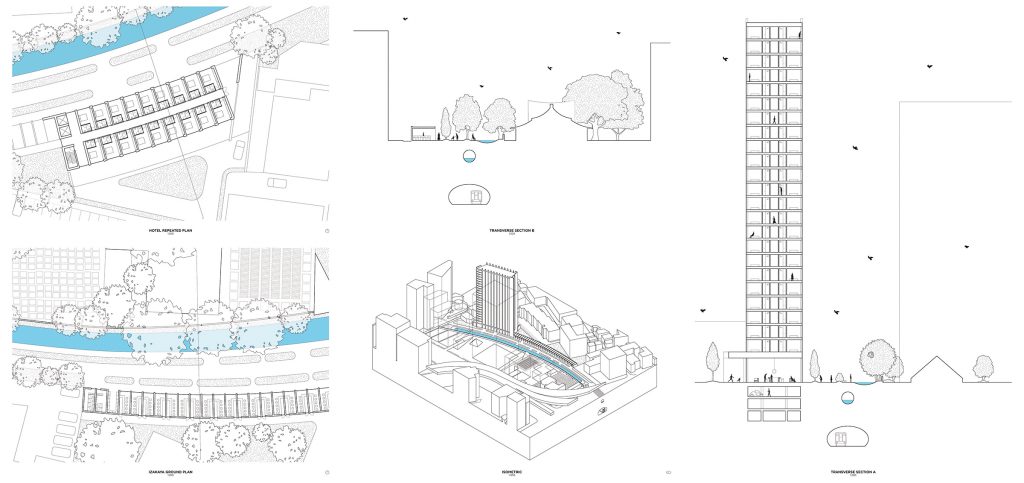
Project by Misha Das
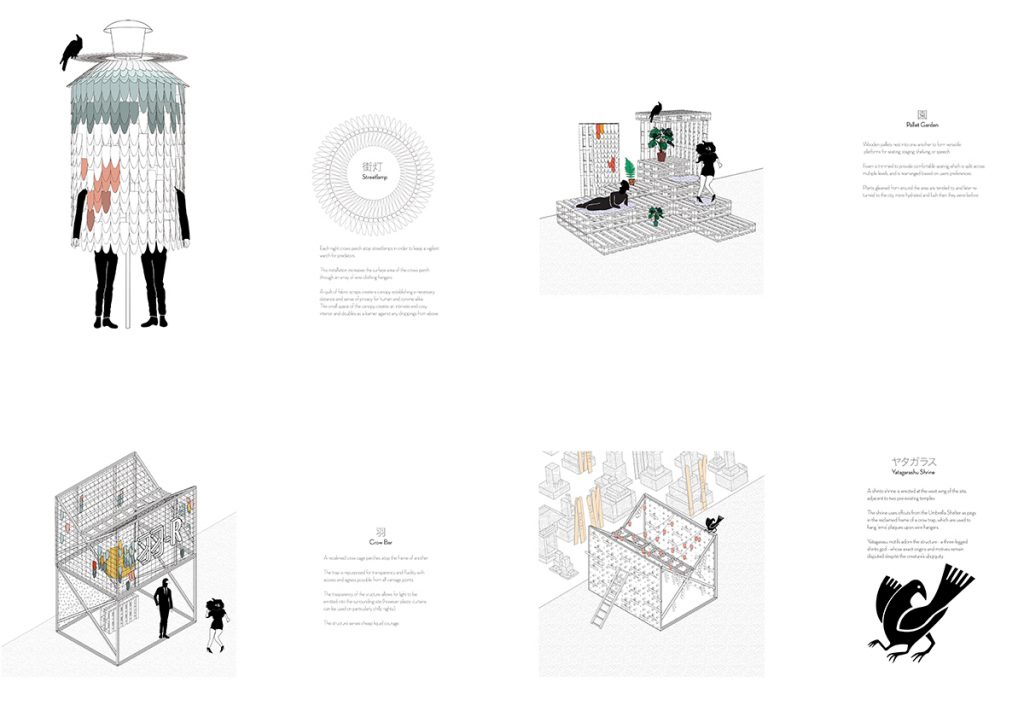
Project by Jeremy Schipper
Research Seminar: On Density
The purpose and task of the field research course was to investigate urban population density as more than a phenomenon of quantity and flow, but as a specific cultural manifestation in built form. The course comprised of two complementary activities: weekly seminar discussions and field-drawing exercises. Organized thematically, the weekly readings and discussions served to provide a robust set of conceptual entry points into the processes and products of urban density, including urban form and typology, vernacular urbanism, domesticity, urban void spaces, and socio-cultural diversity.
In the fieldwork drawing exercises, students were asked to identify, observe, characterise and represent various socio-spatial manifestations of density found throughout Tokyo, and in doing so, develop appropriate visual and verbal vocabularies to address conditions such as duration, program, occasion, change, and time. The broader range of subjects surveyed included infrastructural elementes, such as telephone booths, vending machines or bicycle lanes; uniquitous objects of consumption, such as onigiri (rice-balls), soba (buckwheat noodles) and (uni)forms of clothing; as well as repetitive social behaviours, such as playing pachinko, inemuri (sleeping in public settings, such as trains) and the use of surgical face masks.
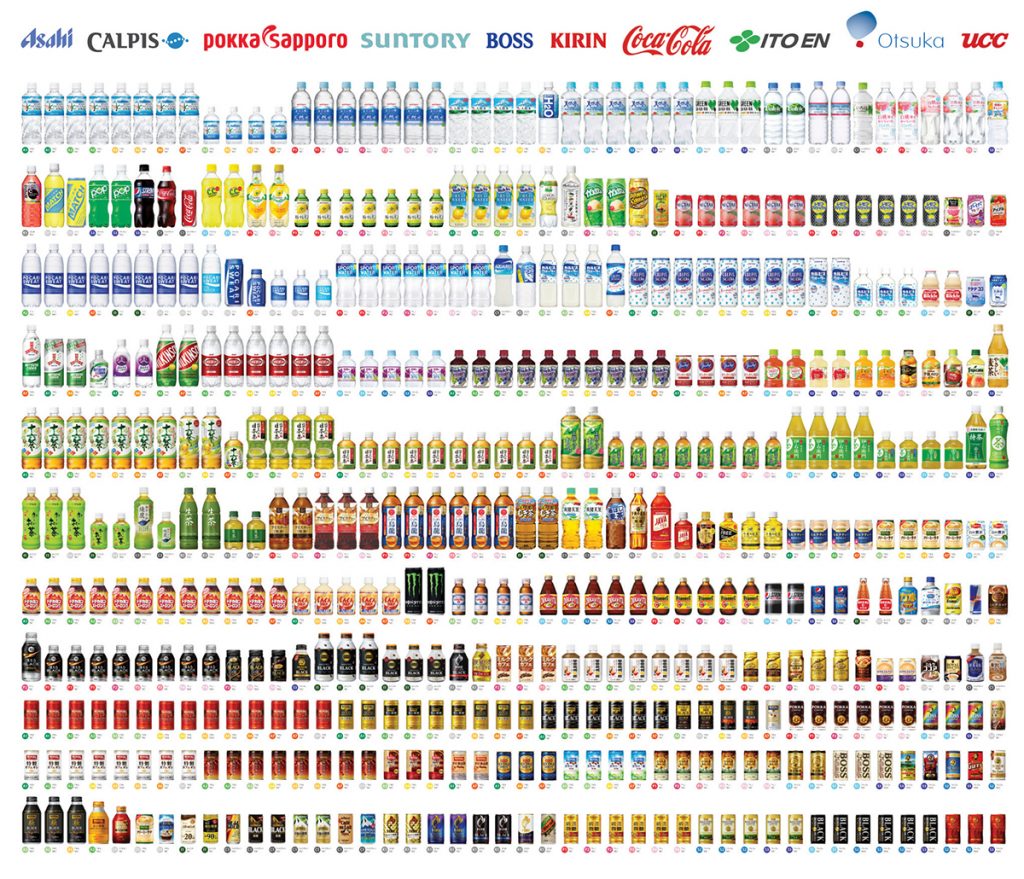
Drawing by Jessyca Fan
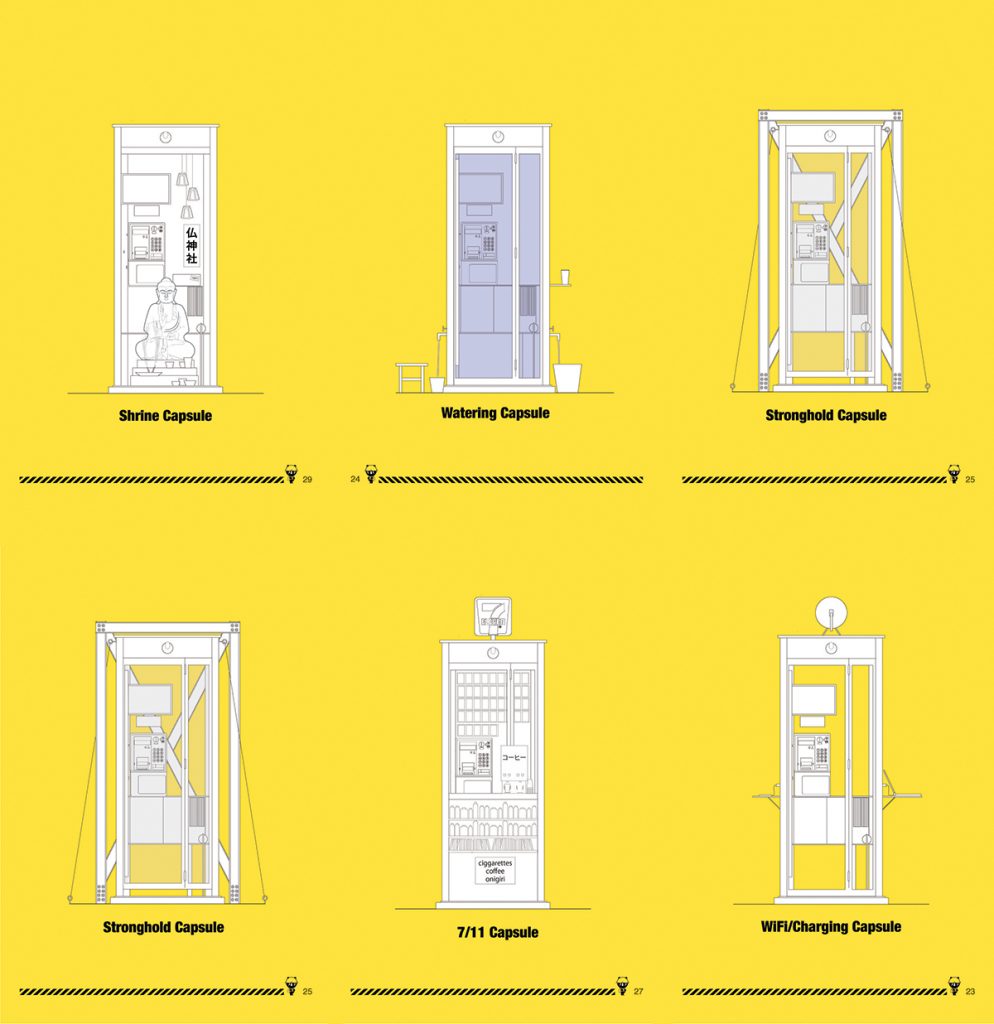
Drawings by Ryder Thalhaimer
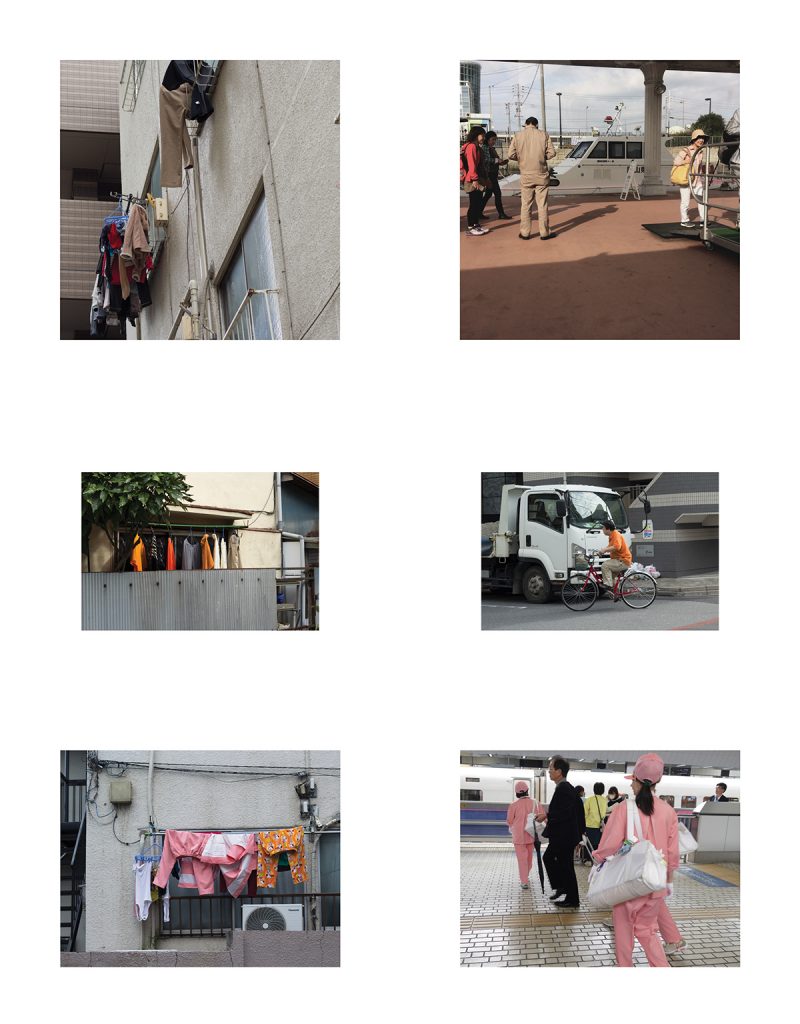
Images by Jérémie Dussault-Lefebvre
Field Study: Post-war and contemporary Tokyo
The purpose of the field study course was equip students with a first-hand understanding of Tokyo’s cataclysmic history during the 20th century, its rapid postwar development, and contemporary architectural and urbanistic tendencies in the context of simultaneous economic stagnation and social diversification.
The basis of the course were weekly, day-long trips to sites of architectural and urbanistic significance, ranging from exemplary public and residential buildings, to vernacular landscapes and infrastructure. These walking tours allowed students to experience and observe architectural and urban spaces first hand, with written assignments serving to deepen and contextualise these observations. Three short essays focused on close readings of building (type) or urban space in Tokyo, while a term paper provided the opportunity for in-depth exploration of a selected site or theme.
As a counterpoint to modern and contemporary architecture in Tokyo, a week-long fieldtrip to the Kansai region centred on visits to historic architecture of temples, shrines and gardens in Kyoto, Nara and Horyuji.
